In data communication, Arista QSFP transceivers are components used to network at high speed between devices. These pluggable optical modules, such as mmf optical transceiver modules, can transmit data at very high speeds, which is why they have become integral to most enterprise networks and data centers. This post will cover technical specifications, benefits, and deployment considerations for Arista QSFP transceivers. Throughout this journey, we will explain how they work, where they fit into network architecture, and why we need them to handle growing data volumes. Whether your goal is to squeeze out more performance from your network or you’re just curious about the latest networking technology trends, keep reading! We hope this guide will give you some good ideas on what can be done with these cool gadgets.
What Are Arista QSFP Transceivers?
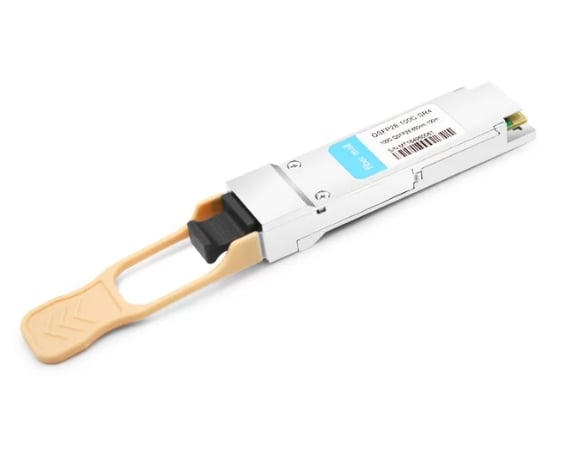
Understanding the Basics of QSFP
Quad Small Form-factor Pluggable (QSFP) transceivers are small, hot-swappable devices that can be used for fast network data transmission. They have four data lanes capable of providing up to 25 Gbps each and can achieve an aggregate rate exceeding or equal to 100 Gbps per second with the help of appropriate technologies. These devices come in different types, such as QSFP+, QSFP28, and QSFP56, which are designed to meet various application needs depending on bandwidth requirements. In addition to this feature, it allows you to easily switch between different formats like optical or copper cables when designing networks because they are flexible enough regarding network design. Furthermore, these transceivers are interoperable, thus making scalability easier than ever before while at the same time future-proofing your investment against new generations like the QSFP-DD, which promises more data throughput.
How Arista Networks Utilizes QSFP
To boost data throughput and connectivity in different settings, Arista Networks employs a lot of QSFP transceivers in its high-performance networking solutions. Integrating these transceivers with their switches and routers enables fast interconnections within data centers and enterprise networks, which can support the increased bandwidth requirements brought about by cloud computing and big data applications. Arista’s ability to configure QSFP modules diversely, including short-range or long-range optics, among others, is made possible due to their flexibility while still following industry standards so that they remain compatible with current infrastructure where necessary. Such kind of using QSFP technology strategically does not just enhance network performance but also allows for future growth, thereby enabling organizations to adjust quickly to changes in technology landscapes.
Key Features of QSFP28
The QSFP28 transceiver is an enhanced version of the QSFP standard designed for high-bandwidth environments. Here are its main features:
- Data Rate: Each port can provide up to 100 Gbps, making it possible to quickly transfer large amounts of data needed by contemporary computer networks.
- Form Factor: It is small, saving space in networking devices and enabling high-density configurations.
- Flexible Connectivity: It supports different modes, such as single-mode and multimode optical fiber, ensuring compliance with various fibers and cable lengths.
- Low Power Consumption: The transceiver uses less power, thus saving energy in data centers where advanced transceivers like QSFP-DD are used.
- Backward Compatible: It can work with older versions of QSFP, allowing easy upgrading or expanding of existing networks, especially when using models like QSFP-DD.
- Reliability in Harsh Environments: Manufacturers build this device according to strict industry standards so that it can function well under different environmental conditions, ensuring stability across diverse settings.
Such characteristics make the QSFP28 the right fit for any modern network infrastructure alongside other options, such as QSFP-DD, since they can transmit information rapidly while being scalable.
How Compatible Are Arista QSFP Transceivers?
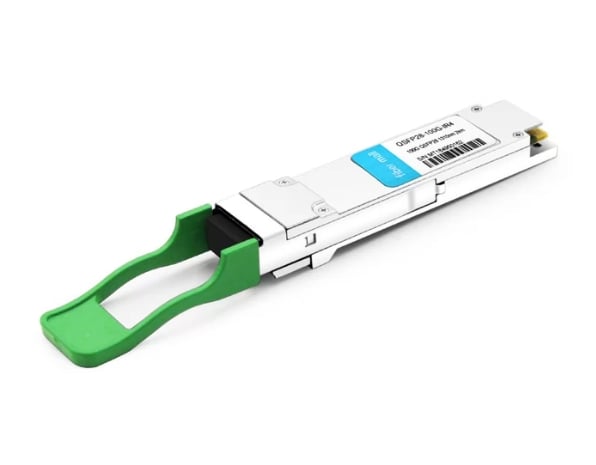
Compatibility with Various Fiber Optic Cables
Arista QSFP transceivers are highly versatile for modern network needs because they can work with many fiber optic cables. They support both multimode and single-mode fibers to cater to various application scenarios. Single-mode fibers utilize only one light path, which is ideal for long-distance communication because it enables data transmission over several kilometers without losing much signal strength. On the other hand, multimode fibers (MMF) allow multiple light paths. They are, therefore, suited for shorter distances, such as those found in data centers or enterprise networks – typically up to 150 meters. These devices have been designed following industry standards to easily integrate with existing fiber infrastructure without causing any compatibility issues. Hence, Arista QSFP transceivers can be used anywhere, including LC SMF optical transceiver module-supported environments, without worrying about whether they will work.
Interoperability with Different Networks
To make sure that they can be used in different networks, Arista QSFP transceivers are designed with a high degree of interoperability in mind. They follow commonly accepted industry standards such as SFF-8402 and IEEE 802.3, enabling them to integrate easily into various network devices produced by different manufacturers. This ability to work together is essential for businesses with multi-vendor environments because it allows them to configure flexibly and upgrade conveniently without costly overhauls.
Another point worth noting is that Arista has prioritized backward compatibility so that new transceivers can work with old systems, safeguarding previous investments while extending the usefulness of these networking parts. Furthermore, robustness in design enables these transceivers to support additional network features like link aggregation and virtual LANs, which enhance overall efficiency and reliability within networks. Such networks may be very complex with many interconnections; hence, this feature becomes essential for optimal performance, where data should flow through different devices optimally regardless of the underlying infrastructure being used.
Common Compatibility Issues and Solutions
While deploying Arista QSFP transceivers, several familiar compatibility problems can be found. One common problem is having different versions of firmware in the transceivers and network devices, which causes connection failures. To solve this issue, it is essential to update all the devices with compatible firmware versions as recommended by the manufacturer.
Another challenge arises when transceivers manufactured by different vendors are used in mixed environments. This may lead to poor performance or failure to recognize a transceiver altogether. The best way to handle such situations is through extensive compatibility testing prior to large-scale deployment while also verifying compliance with industry standards against specifications.
The last problem occurs if passive optical modules are used together with active transceivers; it can result in signal integrity issues. To solve this problem, it is advisable to deploy transceivers specifically designed for use with existing optical infrastructure, thus ensuring the maintenance of electrical characteristics and meeting performance requirements. Network monitoring should be done regularly coupled with proper maintenance to prevent these types of compatibility issues from happening and fix them quickly if they occur within the network environment setup.
What Applications Are Suitable for Arista QSFP Transceivers?
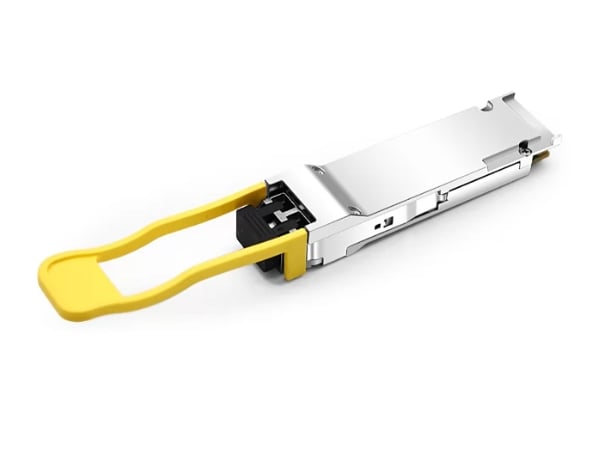
Deployment in Data Center Environments
The Arista QSFP transceivers find their best use in the data center due to the amount of data they can handle at a time and how quickly they can do it. They are able to operate as multi-protocol devices over one interface (e.g., Ethernet or Fiber Channel), which means that they have many applications such as cloud computing, high-performance computing (HPC), and large-scale data storage, among others. For this reason, implementing QSFP transceivers is important for efficient processing of information with minimal traffic jams, especially now that vast amounts of data are being transmitted every second. In addition, their size saves on space when arranging racks closely together while still supporting more elaborate functions like monitoring systems built into them for better control over complex operations carried out within these facilities and ensuring good performance across networks. There will be increased connectivity and better use of bandwidths as data centers become more flexible and scalable; therefore, the integration of Arista QSFP transceivers should not be overlooked.
Usage in High-Speed Ethernet Networks
The Arista QSFP transceivers are widely used in high-speed Ethernet networks, providing the necessary capacity for supporting links of 10GbE, 40GbE, and even 100GbE. These transceivers make possible the integration of high-speed connections that are needed by enterprise applications like video streaming, real-time data analytics, or large-scale content delivery networks. Network engineers can achieve lower latency and higher throughput to meet the demands of modern data-intensive applications by using Arista’s QSFPs. Scalable solutions for future upgrades without major infrastructure modifications can be achieved due to the flexibility inherent in this type of transceiver; also, support for different optical/copper networking standards ensures compatibility with existing network environments, thus making them ideal for building strong & high-performance Ethernet networks.
Application in Long-Distance Communication
Arista QSFP transceivers are very important for long-range communication since they can maintain signal quality over long distances and provide high data rates simultaneously. These transceivers use Dense Wavelength Division Multiplexing (DWDM) technology that supports many streams of data over one optic fiber, which greatly increases bandwidth capacity. Furthermore, their strong structure helps to reduce signal loss and attenuation so they can be used in connecting remote data centers. In fact, it is possible to create any architecture with a flexible network using Arista QSFP transceiver for long-haul links as well as realize seamless communication between different points on Earth’s surface while dealing with high bandwidth applications like cloud computing or global content delivery networks. Therefore, without the integration of these devices into long-haul optical networks where speed and distance requirements continue growing at exponential rates, there will not be any optimized performance or reliability during data transfers.
How do you choose the right Arista QSFP Transceiver?
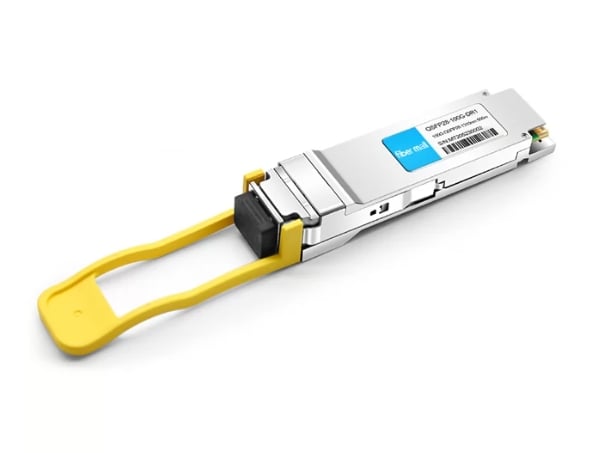
Key Specifications to Consider
To ensure the best network infrastructure fit, when choosing an Arista QSFP transceiver, such as an LC SMF optical transceiver module among others, several main specifications should be considered:
- Data Rate: Know the rate at which data needs to be transmitted. There are many choices for QSFP transceivers such as 40G and 100G, which come in different configurations for different performance levels.
- Wavelength & Reach: What is the distance of transmission and what may affect it in terms of environment? The wavelength figure measured in nanometers usually tells how far a transceiver can go effectively. Multimode transceivers work well with short distances, while single-mode ones are suitable for long-haul applications.
- Connector Type: Ensure consistency between connectors used by new devices and those already installed along cables. Common connector types are LC, MPO, and SC, each with its own installation process and performance features.
- Protocol Compatibility: Ensure that networking protocols used within your environment, such as Ethernet, Fibre Channel, or InfiniBand, will work together with selected model(s), e.g., QSFP-40G-SR4 compatible models.
- Optical vs. Copper: Consider whether the deployment area demands fiber optic or copper-based modules. Fiber optics are good at covering large distances, while copper can save money on short runs.
These tips will help network engineers implement Arista QSFP transceivers successfully thus improving their efficiency and setting them up for future growth opportunities.
Understanding Data Rate and Distance Requirements
In assessing data rate and distance requirements for network applications, there are some important considerations to consider. First, the data rate should be aligned with the specific requirements of network traffic and protocols supported by DDM (Digital Diagnostics Monitoring), among others. For instance, in high-performance environments, it may be necessary to use 100G transceivers that can handle large amounts of data. At the same time, general applications might only need 10G or 40G options.
Distance is another factor that needs careful thought; here we have a choice between singlemode and multimode fibers. Multimode fibers work well over short distances, usually within local area network (LAN) connections where they can cover up to about 300 meters, while singlemode fibers can stretch beyond 40 kilometers, enabling long-haul connectivity. It is also important to consider environmental conditions such as temperature variations and physical obstacles because these factors can affect signal quality and transmission range. Therefore, knowledge about them will enable network engineers to design efficient systems robust enough for their operational requirements.
Comparing Different QSFP Models
When comparing different types of QSFP (Quad Small Form-factor Pluggable), a number of parameters, such as data rates, transmission distances, and fiber type compatibility, including duplex LC SMF optical transceiver, come into play. These are the three main models: QSFP, QSFP+, and QSFP28.
- QSFP: This is usually for short-range connections, given its support of up to 40G data rates, which makes it suitable for local area networks (LANs) applications.
- QSFP+: This model can work with various network configurations. It improves thermal management while supporting 40G connectivity over multiple transmission protocols that are known in the industry.
- QSFP28: With backward compatibility for 40G applications and designed to provide higher data throughput, this model supports bandwidth demand where single-mode fibers are used alongside long-haul communication in data centers requiring up to 100G capacity through advanced modulation schemes.
To correctly choose one among these qsfp models, you must evaluate specific needs based on deployment scenarios, taking into consideration infrastructure abilities and bandwidth requirements so as not to compromise network performance.
What Are the Advantages of Using Arista QSFP Transceivers?
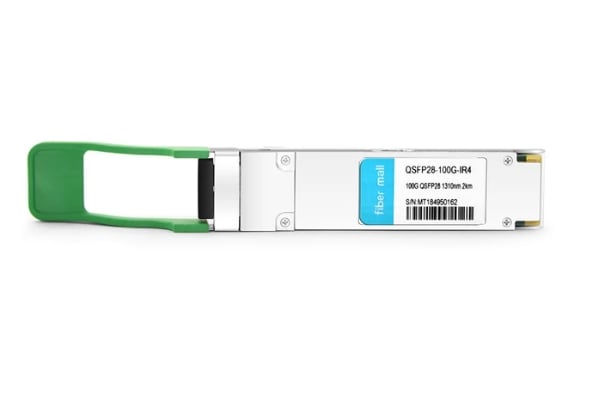
Cost-Effectiveness and Performance
The main reason why Arista QSFP transceivers are considered to be very cost-effective is that they can provide high data rates over the existing infrastructure without requiring a lot of upgrades. These transceivers are made in such a way that they use technologies like compact cabling and power saving, which help reduce both capital expenditure and operational costs. Additionally, the devices use robust signal integrity and low latency to guarantee enhanced performance and meet modern data centers’ requirements. The flexibility of QSFPs produced by Arista enables them to work on different platforms or protocols; thus, they can be used in any networking environment without any problems; this subsequently improves overall system performance while still keeping it cost-effective against other competitors. The above-mentioned points make these types of transmitters suitable for use in various organizations because they offer great speeds at lower prices, thereby helping companies achieve their network optimization goals.
Enhanced Reliability and Durability
Arista QSFPs are designed for high reliability and durability, making them suitable for use in critical data center environments. They are made from top-quality materials that withstand environmental conditions like temperature variations and humidity levels so as to ensure consistent performance with time. Additionally, this module goes through thorough testing and validation against industry standards which greatly reduces field failures. For instance, features such as built-in diagnostics enable real-time monitoring of every transceiver’s health status, thus allowing proactive maintenance while minimizing downtimes. Altogether, these things make Arista QSFPs last longer and work better; hence, they should be the first option for strong networking solutions in demanding applications.
Flexibility in Network Design
Arista’s QSFP transceivers are flexibly designed, which implies that users can customize their infrastructure to match specific needs. These devices also support different protocols, including Ethernet, fiber channels, and InfiniBand, thus making it possible for them to work on different systems. Their small and high-density features make them ideal for maximizing on-rack space utilization without compromising data center throughputs. Additionally, this versatility not only supports various networking architectures but also allows future expansion and upgrades that ensure investment protection and scalability when technology changes. By enabling more dynamism in configurations, Arista QSFPs help create stronger networks that respond better to businesses’ operational requirements.
Reference Sources
Frequently Asked Questions (FAQs)
Q: What is an Arista QSFP transceiver?
A: An Arista QSFP transceiver is an optical transceiver module used in network switches and routers for fast data transmission. These are designed to work with Arista Networks® devices.
Q: What does QSFP stand for?
A: QSFP stands for Quad Small Form-factor Pluggable, including variations like the QSFP-DD, which offers higher performance. It is a small, pluggable transceiver used in data communication applications. The main advantage of these in network infrastructure is their ability to provide high-speed rates.
Q: What are the main features of a QSFP-100G-SR4 compatible transceiver?
A: Typically, a QSPF-100G-SR4 compatible will support 100Gbps data rates, work on multimode fibers (OM3 or OM4), and reach 100 meters using OM4 fiber. It operates using an 850nm wavelength and has MTP/MPO connectors.
Q: How do users benefit from the DOM feature?
A: Users can monitor real-time digital optical parameters such as power level, temperature, voltage, etc., to maintain the best conditions and diagnose any potential problems with the optical transceiver module.
Q: Can I use Arista QSFPs with other brands like Cisco?
A: Yes, you can often use Arista QSFPs with other brands, such as Cisco, if they are MSA-compliant and compatible. However, it’s always good practice to check your equipment compatibility requirements first.
Q: What is a typical wavelength for an Arista Networks QSFP-100G-SR4 compatible transceiver?
A: The typical wavelength of an Arista Networks QSFP-100G-SR4 compatible transceiver is 850nm, which is used for short-range data transmission over multimode fiber.
Q: What types of connectors are used in QSFP28 optical transceivers?
A: QSFP28 optical transceivers typically use MTP/MPO connectors to achieve higher data rates for parallel optics. Some also use LC connectors for duplex transmission over single-mode fiber (SMF).
Q: Are there specific fiber cables recommended for use with QSFP transceivers?
A: OM3 or OM4 multimode fiber (MMF) cables are recommended for short-range applications. Single-mode fiber (SMF) cables with standard LC connectors are used for longer distances.
Q: How can I ensure the QSFP transceiver I buy is compliant?
A: You can check if the QSFP transceiver meets industry standards like MSA, RoHS, and TAA. Customer reviews and OEM specifications may also show that it does so.
Q: What should I look for in customer reviews about QSFP transceivers?
A: When reading customer reviews, pay attention to compatibility feedback between different brands, performance reports under various scenarios, reliability issues raised and how they were resolved by manufacturers, and comments on customer support quality. This will give you a better idea of what to expect from these devices based on other users’ experiences in real-life situations.
Related Products:
-
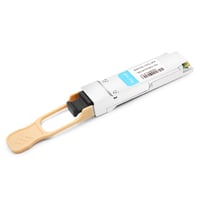 Arista Networks QSFP-100G-SR4 Compatible 100G QSFP28 SR4 850nm 100m MTP/MPO MMF DDM Transceiver Module
$40.00
Arista Networks QSFP-100G-SR4 Compatible 100G QSFP28 SR4 850nm 100m MTP/MPO MMF DDM Transceiver Module
$40.00
-
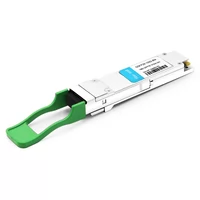 Arista Networks QSFP-100G-CWDM4 Compatible 100G QSFP28 CWDM4 1310nm 2km LC SMF DDM Transceiver Module
$110.00
Arista Networks QSFP-100G-CWDM4 Compatible 100G QSFP28 CWDM4 1310nm 2km LC SMF DDM Transceiver Module
$110.00
-
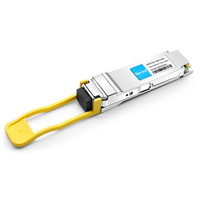 Arista Networks QSFP-100G-DR Compatible 100G QSFP28 Single Lambda DR 1310nm 500m LC SMF with FEC DDM Optical Transceiver
$180.00
Arista Networks QSFP-100G-DR Compatible 100G QSFP28 Single Lambda DR 1310nm 500m LC SMF with FEC DDM Optical Transceiver
$180.00
-
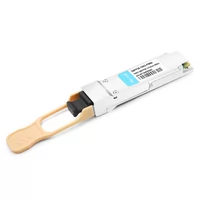 Arista Networks QSFP-100G-PSM4 Compatible 100G QSFP28 PSM4 1310nm 500m MTP/MPO SMF DDM Transceiver Module
$180.00
Arista Networks QSFP-100G-PSM4 Compatible 100G QSFP28 PSM4 1310nm 500m MTP/MPO SMF DDM Transceiver Module
$180.00
-
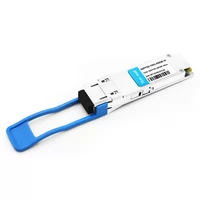 Arista Networks QSFP-100G-4WDM-10 Compatible 100G QSFP28 4WDM 10km LC SMF DDM Transceiver Module
$200.00
Arista Networks QSFP-100G-4WDM-10 Compatible 100G QSFP28 4WDM 10km LC SMF DDM Transceiver Module
$200.00
-
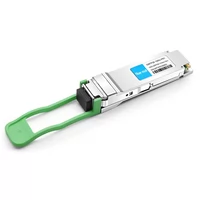 Arista Networks QSFP-100G-FR Compatible 100G QSFP28 Single Lambda FR 1310nm 2km LC SMF with FEC DDM Optical Transceiver
$215.00
Arista Networks QSFP-100G-FR Compatible 100G QSFP28 Single Lambda FR 1310nm 2km LC SMF with FEC DDM Optical Transceiver
$215.00
-
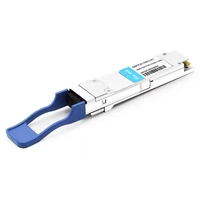 Arista Networks QSFP-100G-LR Compatible 100G QSFP28 Single Lambda LR 1310nm 10km LC SMF with FEC DDM Optical Transceiver
$265.00
Arista Networks QSFP-100G-LR Compatible 100G QSFP28 Single Lambda LR 1310nm 10km LC SMF with FEC DDM Optical Transceiver
$265.00
-
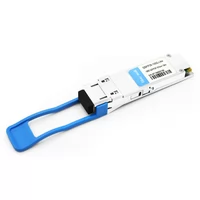 Arista Networks QSFP-100G-LR4 Compatible 100G QSFP28 LR4 1310nm (LAN WDM) 10km LC SMF DDM Transceiver Module
$285.00
Arista Networks QSFP-100G-LR4 Compatible 100G QSFP28 LR4 1310nm (LAN WDM) 10km LC SMF DDM Transceiver Module
$285.00
-
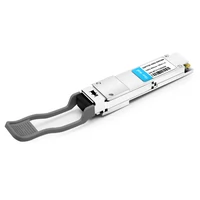 Arista Networks QSFP-100G-SWDM4 Compatible 100G QSFP28 SWDM4 850nm-940nm 100m LC MMF DDM Optical Transceiver
$300.00
Arista Networks QSFP-100G-SWDM4 Compatible 100G QSFP28 SWDM4 850nm-940nm 100m LC MMF DDM Optical Transceiver
$300.00
-
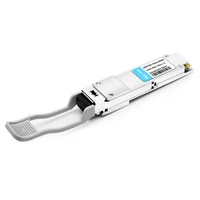 Arista Networks QSFP-100G-SRBD Compatible Dual Rate 40G/100G QSFP28 BIDI 850nm & 900nm 100m LC MMF DDM Optical Transceiver
$449.00
Arista Networks QSFP-100G-SRBD Compatible Dual Rate 40G/100G QSFP28 BIDI 850nm & 900nm 100m LC MMF DDM Optical Transceiver
$449.00
